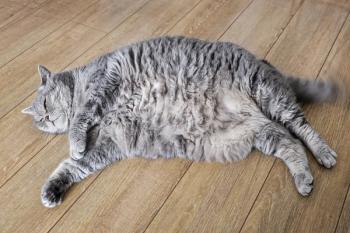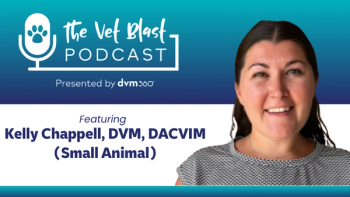
Feline DNA sequenced
Frederick, Md. - Two years of scientific collaboration yields a nearly complete decoding of the feline genome, a step that will aid in the continued fight against both cat and human diseases.
FREDERICK, MD. — Two years of scientific collaboration yields a nearly complete decoding of the feline genome, a step that will aid in the continued fight against both cat and human diseases.
The DNA of 4-year-old Cinnamon, an Abyssinian cat living at the University of Missouri-Columbia, was analyzed using light, or two-fold, genome sequence coverage, previous feline gene-mapping studies and a comparison to previously sequenced mammalian genomes — human, chimpanzee, mouse, rat, dog and cow.
"The multi-genome comparison allowed us to compare the chromosomal organization of the seven species, then to propose the number of chromosomal breaks and fusions that have occurred in each species since the time of their common ancestor," says Joan Pontius, PhD, researcher with the Laboratory of Genomic Diversity at the National Cancer Institute (NCI), where the project was based.
Titled "The Cat Genome Project," the 1.9-X sequencing for Cinnamon represents about 65 percent of the established feline genome. "This means we only have partial coverage of Cinnamon's sequence. In order to put together a contiguous read of Cinnamon's complete genome of some 2.7 billion base pairs from short-sequence reads of hundreds of base pairs, you need many overlapping pieces," says Marilyn Menotti-Raymond, PhD and staff scientist with NCI's genomic diversity lab.
"Bottom line, there are still lots of gaps in Cinnamon's sequence right now. It would be like having a sentence, 'The quick brown fox slyly jumps over the lazy dog,' and missing 'slyly jumps over' ," she says.
Continued work on the genome is already under way by specialized sequencing researchers at the St. Louis-based Washington University, slated for completion next year. "This will allow for a more complete assembly of the cat genome," Menotti-Raymond says.
"Generally, you have to sequence a genome seven to eight times over in order to be able to generate a contiguous sequence from these short-sequence reads," she says.
The research partners, which include the National Human Genome Research Institute, Agencourt Bioscience Corp., Broad Institute of Harvard and MIT, University of California at San Diego, University of Pennsylvania, Texas A&M University and Portugal institutions, among others, selected Cinnamon from more than 1,000 purebred cats. Having one of the 10 lowest heterozygosities — or variations between the two copies of DNA received from her sire and dame — Cinnamon's makeup greatly facilitated the assembly of the genome sequence from the individual sequence reads, Menotti-Raymond says.
Progress will continue to benefit both felines and humans, Pontius says. "The cat is important for the study of infectious disease," she says of the animal, a species that experiences more than 200 diseases analogous to humans, including feline immunodeficiency virus; feline coronavirus that mimics avian influenza; and feline leukemia, representative of leukemia battled by humans, among others.
"This is also important for hereditary diseases," Pontius says. "Cinnamon comes from a pedigree of cats that have retinitis pigmentosa. Using the feline genome, we could pinpoint which gene caused Cinnamon's blindness."
The findings also can be used for parentage testing, forensic analysis and studies of evolution, including the reconstruction of the domestication process, fancy-breed development and ecological adaptation, according to a paper released by the feline genome study's authors.
Newsletter
From exam room tips to practice management insights, get trusted veterinary news delivered straight to your inbox—subscribe to dvm360.






